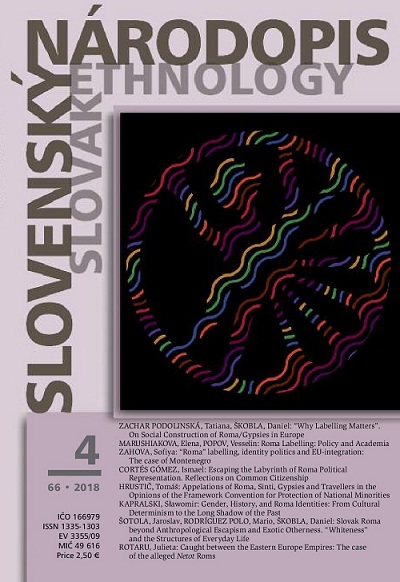“Why labelling matters”: on social construction of Roma / Gypsies in Europe
“Why labelling matters”: on social construction of Roma / Gypsies in Europe
Author(s): Tatiana Zachar Podolinská, Daniel ŠkoblaSubject(s): Anthropology, Customs / Folklore, Cultural Anthropology / Ethnology, Culture and social structure
Published by: Ústav etnológie a sociálnej antropológie Slovenskej akadémie vied
Keywords: social constructions; Roma; gypsies; ethnology
Summary/Abstract: Decision makers, governments, national policymakers, European institutions and as well as many scholars, not to speak about the general public, operate with the term “Roma/Gypsies” as if it was a fixed appellation for a monolithic ethnic group. Policies of the Council of Europe, EU strategies for inclusion of Roma, different position papers and other texts and documents label various groups of people with various social positions in society under one roof. Political parties, government and inter-government representatives across Europe often operate with the term “Roma” ignoring the fact that there are various groups of people and identities around the world with different Romani, Sinti, Travellers and various other origins. Moreover, the term “Roma” as it is used in most of these documents and in mainstream political and public discourse is imbued with implications of “socially excluded”, “marginalized”, “vulnerable”, “poverty-stricken”, “dependent on welfare” and many other adjectives which consequently generate resources for strategies, proposals, measures and action plans for example for “integration of Roma” into the mainstream society. The group labelled as “Roma”, are a “convenient” and recurring target of “hard hand” policies, often serving as a populistic magnet for generating support in political preference polls of political parties of any kind.
Journal: Slovenský národopis
- Issue Year: 66/2018
- Issue No: 4
- Page Range: 378-384
- Page Count: 7
- Language: English

